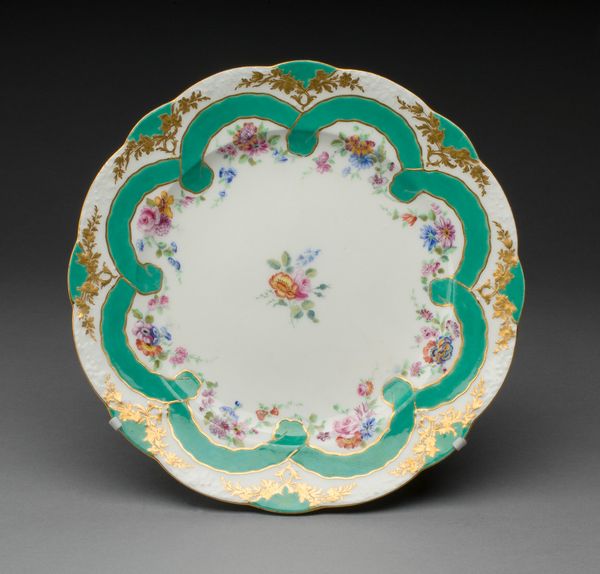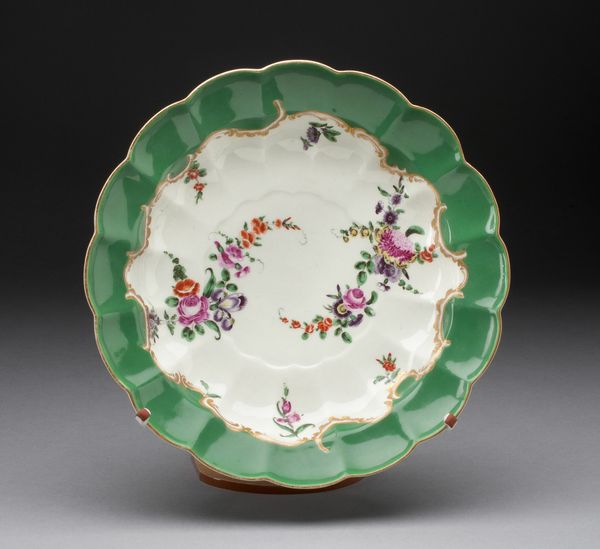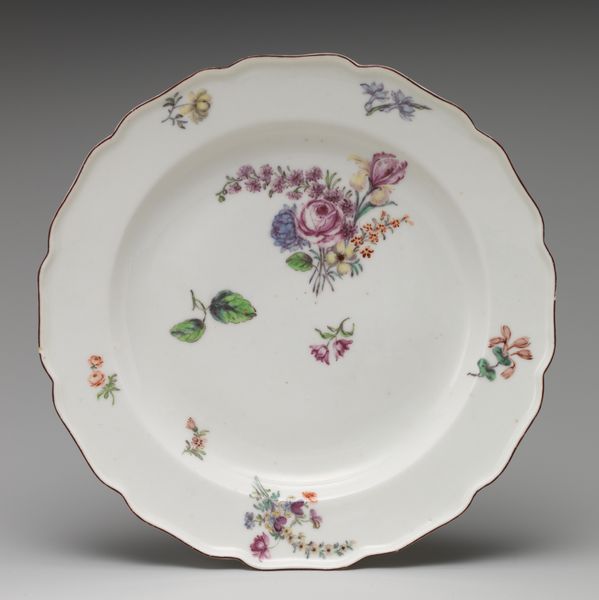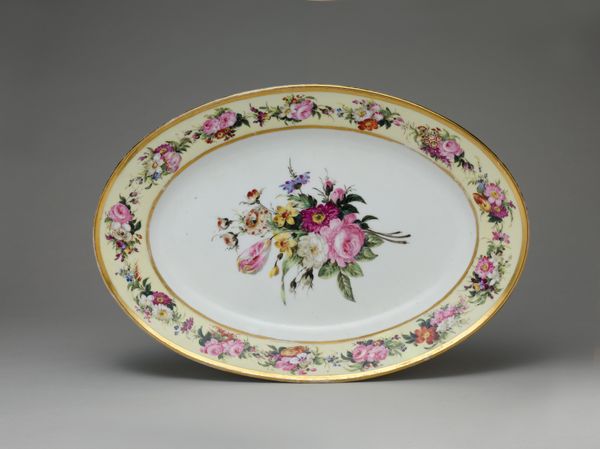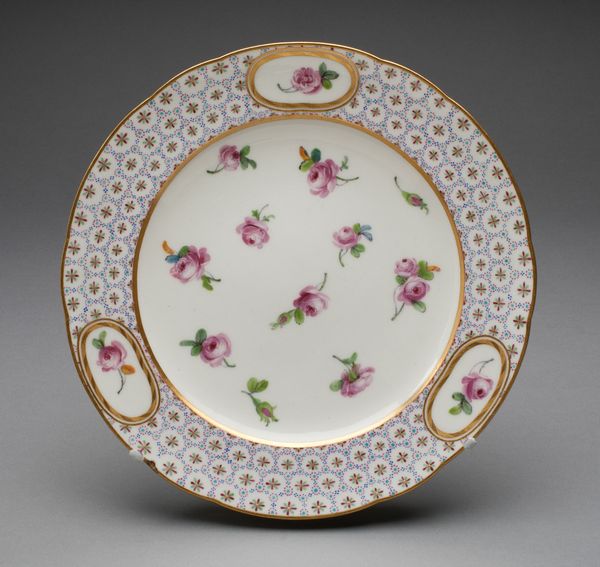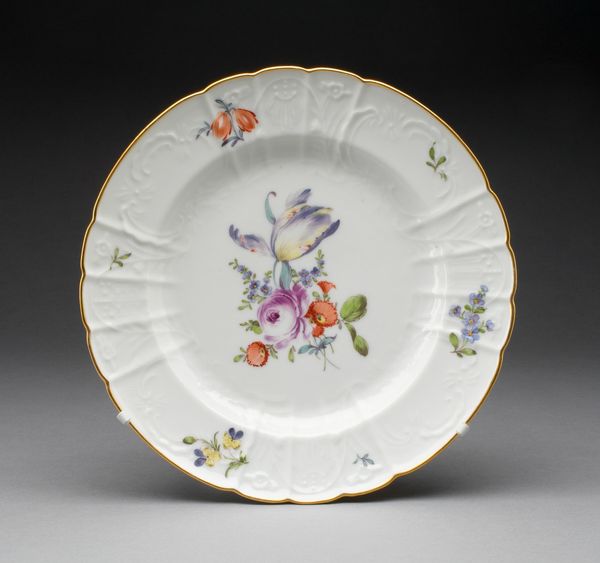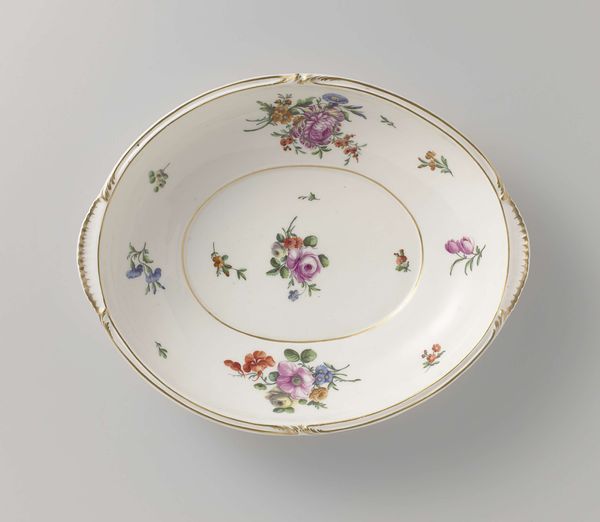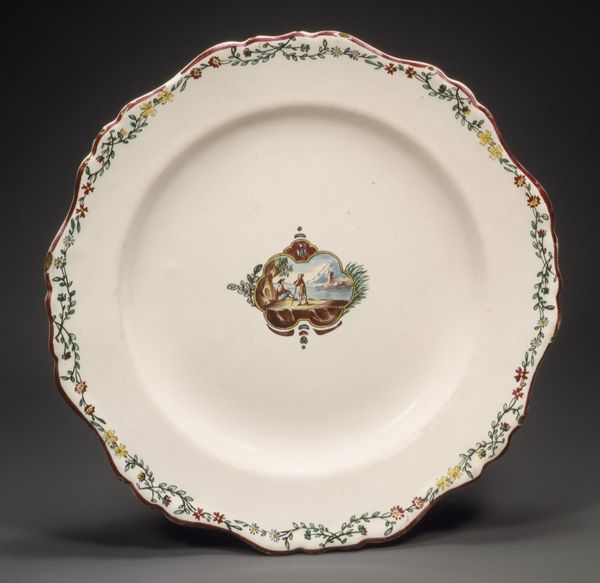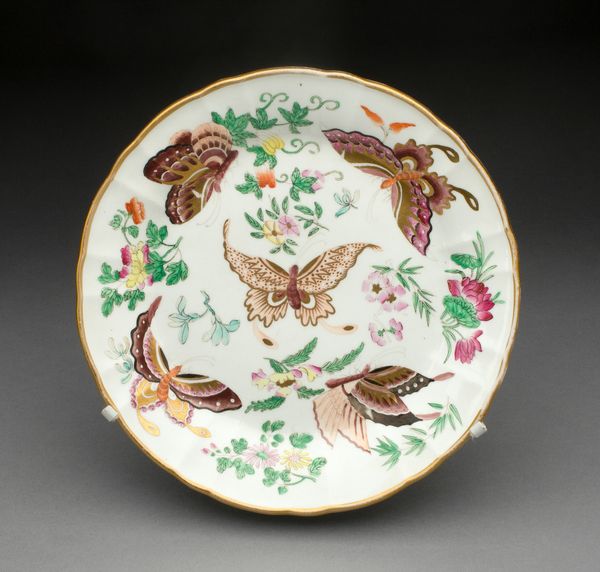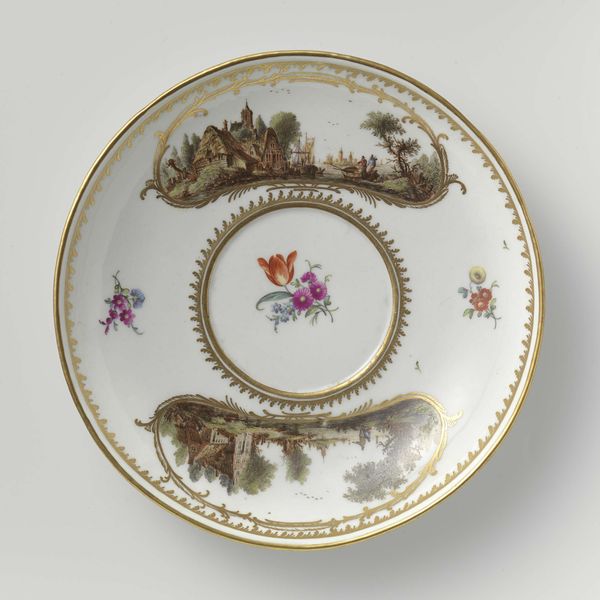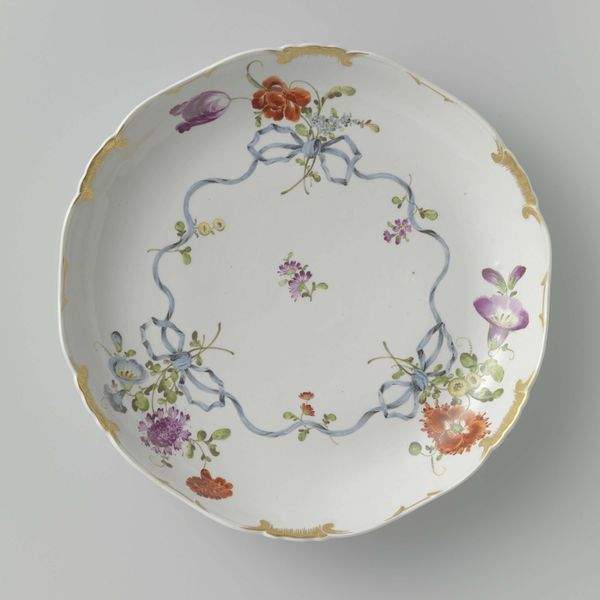
ceramic, porcelain, enamel
#
ceramic
#
porcelain
#
enamel
#
ceramic
#
decorative-art
#
rococo
Dimensions: H. 2.5 cm (1 in.); diam. 24.5 cm ( 9 5/8 in.)
Copyright: Public Domain
Editor: Here we have a "Plate" crafted in 1765 by Manufacture nationale de Sèvres, utilizing porcelain and enamel. It's a pretty little thing, so delicate, with a field of green edged with gold flourishes. What symbolism do you see embedded in these decorative arts? Curator: Well, let's consider the Rococo period's fondness for the natural world. Notice the bouquet at the plate's center, accompanied by a dragonfly and a butterfly. Aren't those more than just pretty decorations? Editor: Perhaps! I guess the butterfly could represent transformation. Curator: Precisely! And consider the dragonfly – in some cultures, it signifies illusion and change, even a connection to the spirit world. In contrast, the flowers, bursting with color, echo the vitality of life. Could it be that the combination embodies something about mortality, even if very lightly touched upon? Editor: Mortality... on a plate? It feels a bit strange, doesn't it? Curator: Think about it: dining, especially then, was ritualized and a status display. These fleeting insects against permanent, precious porcelain evoke a sense of time and its passage. Do you see how that tension elevates the object? It encourages contemplation. Editor: I suppose seeing life and its ephemeral beauty juxtaposed on a common household item creates a lasting imprint. It changes the meaning of something ordinary. Curator: Exactly! Everyday objects become vessels for cultural memory and deeper understanding, reflecting society's values and its quiet acknowledgment of life's delicate balance. It shows how much significance people could pour into everyday routines. Editor: I never thought a plate could hold so much meaning. Thank you for helping me look at it in new ways!
Comments
No comments
Be the first to comment and join the conversation on the ultimate creative platform.

